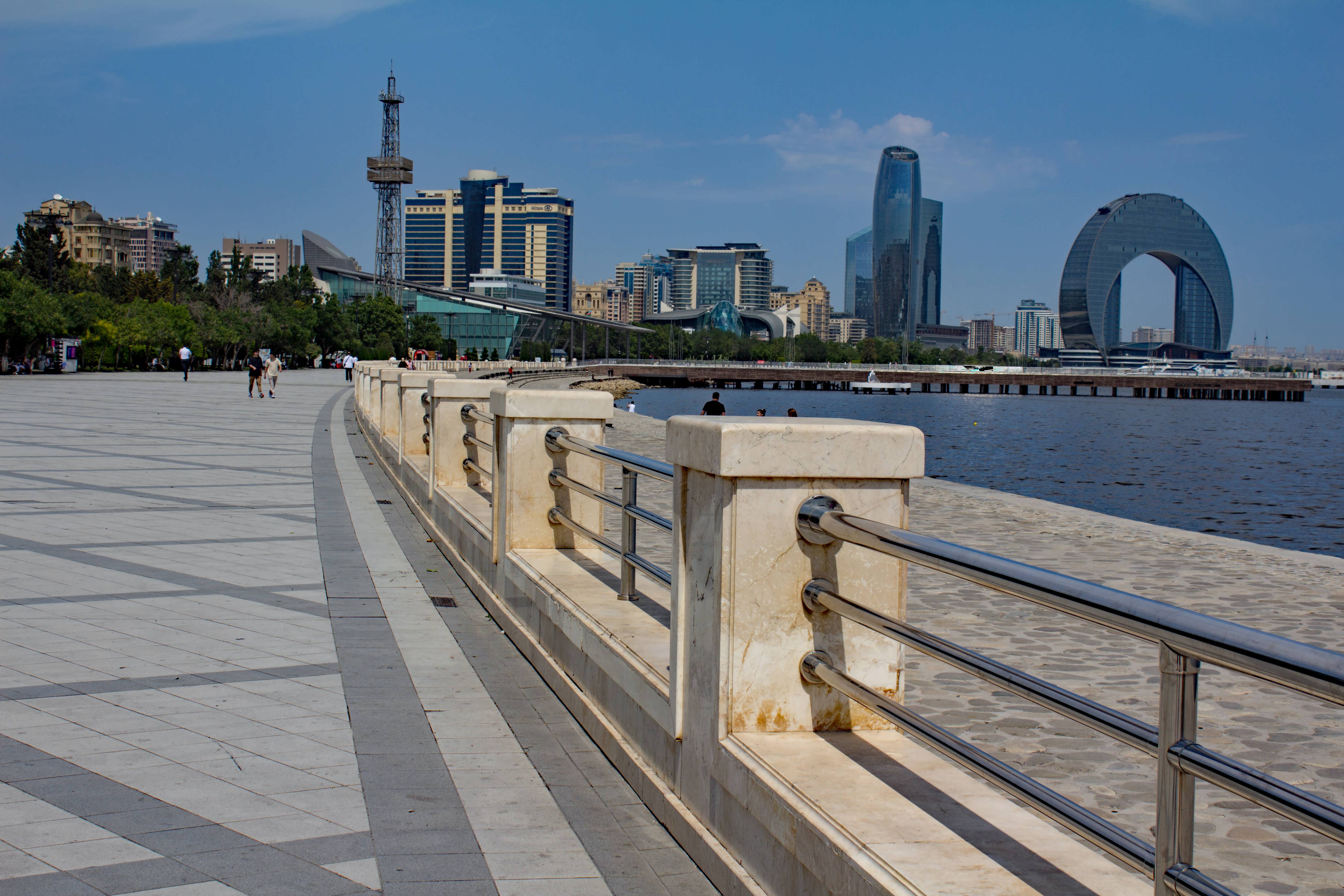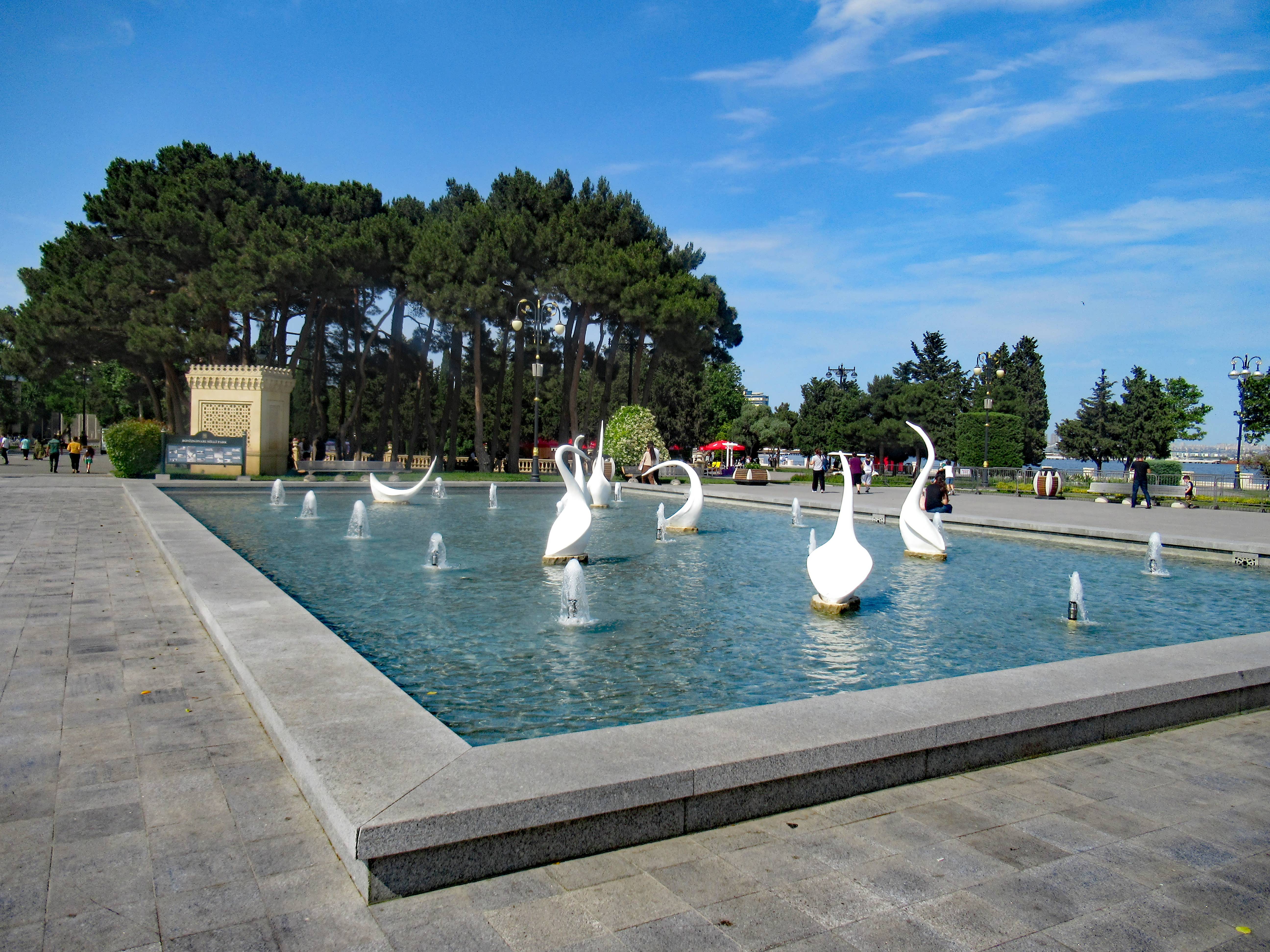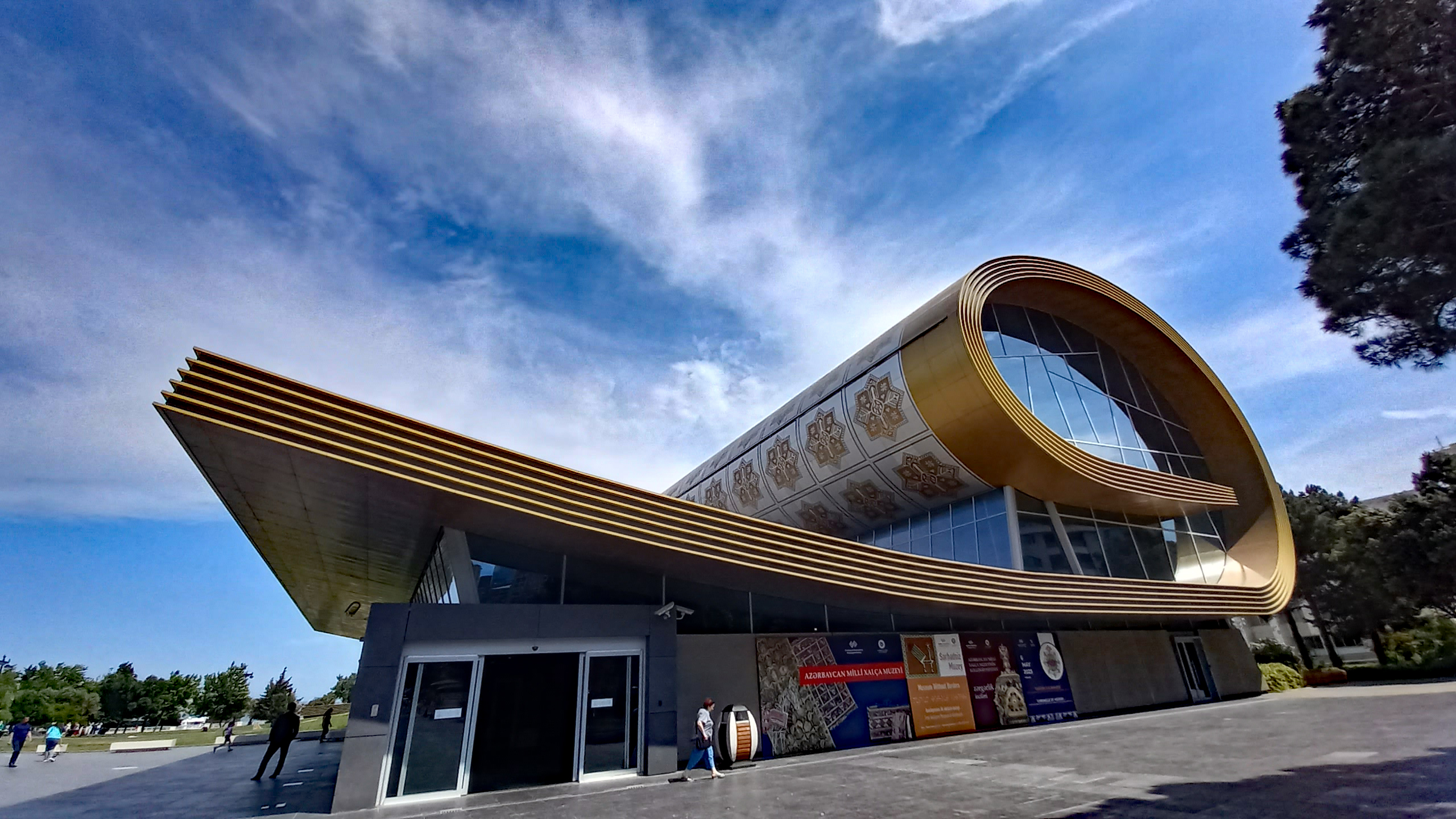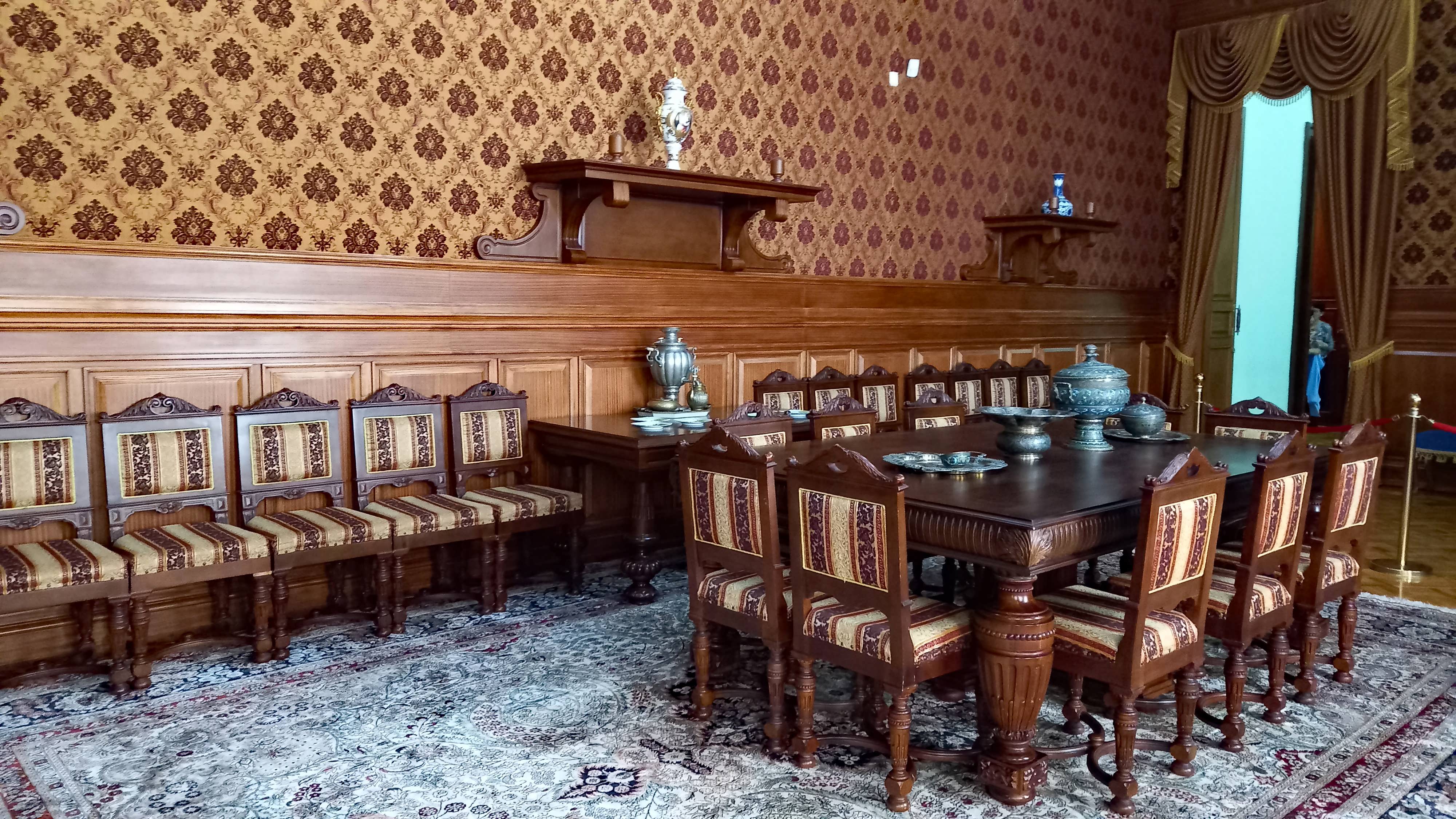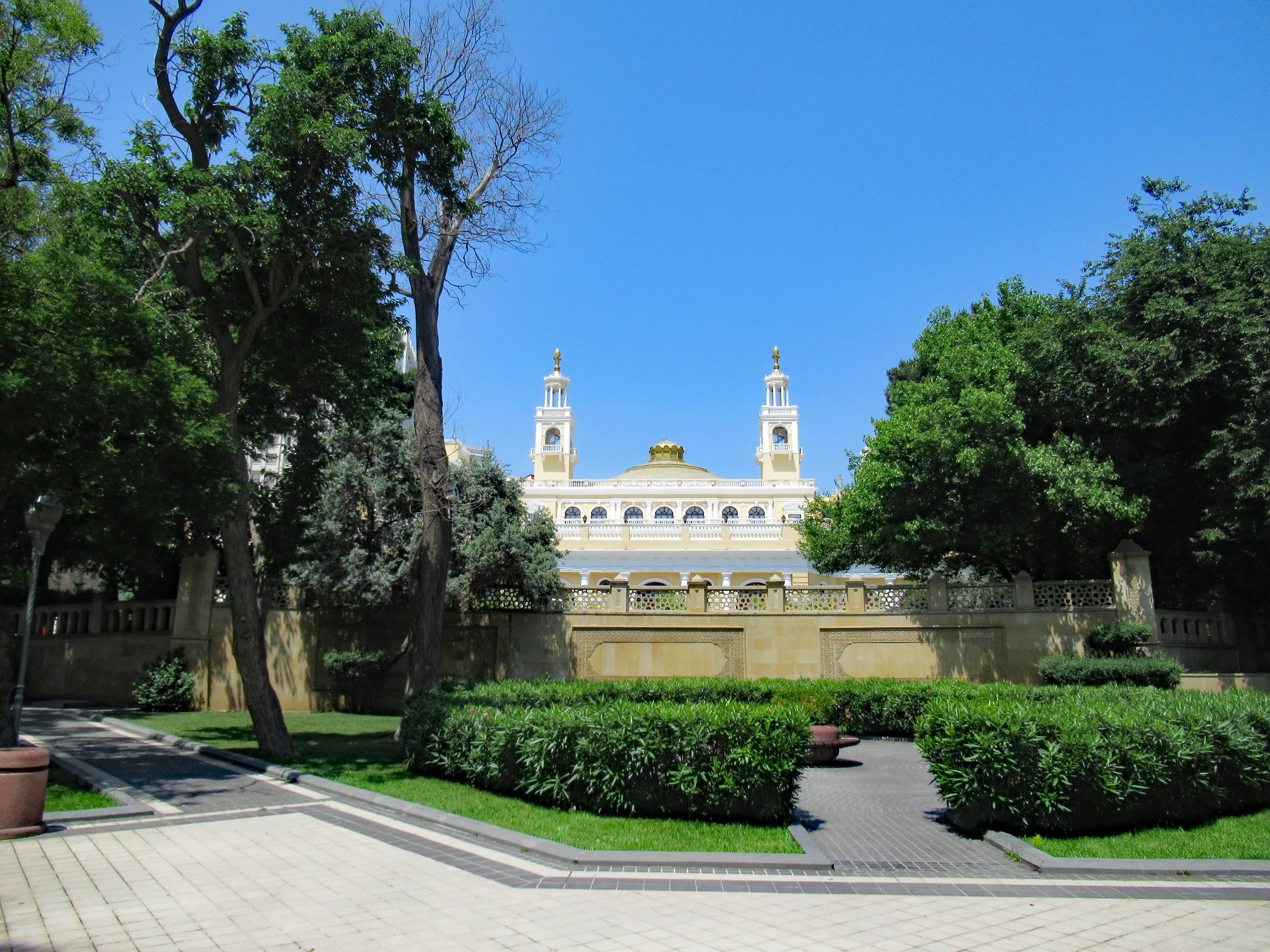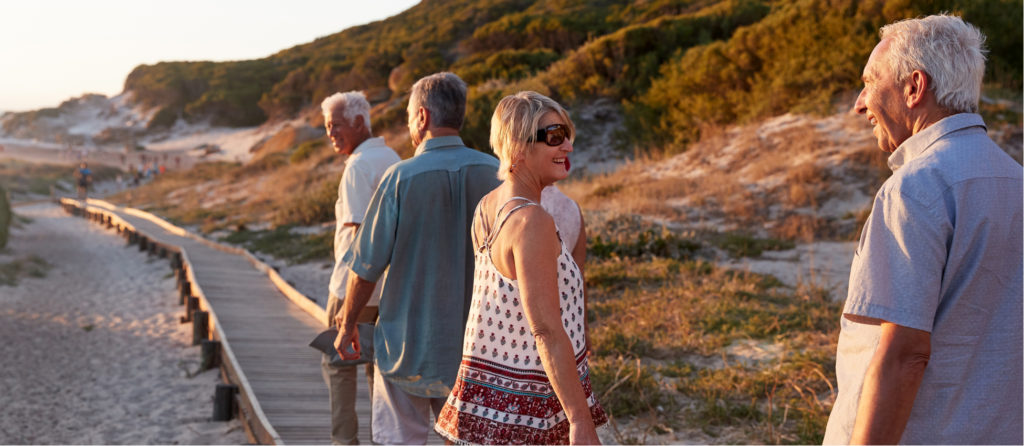Azerbaijan’s capital, Baku, has both a medieval walled city and, as befits a country known for its oil production, a modern area with contemporary, stunning architecture. At 92 feet below sea level, it’s the world’s lowest lying capital, and largest city below sea level.
We stayed in the city for four nights and had both organised tours and free time. Having visited the Upland Park area, we enjoyed other sights back down in town.
Bulvar – Baku sits on the Caspian Sea and it was pleasant strolling along the Bulvar or promenade. Gondolas could be hired at ‘Little Venice’ where decorative stone bridges crossed the shallow water channels meandering through beautiful gardens. A nearby water feature had seven elegant stone swans and at the statue of the opera baritone, Muslim Magomayev, buttons could be pressed to hear a range of songs. Several cafes and ice cream stalls along the way were ideal for a pit stop.
During our free time, our guide recommended several museums, and we chose to visit two.
Carpet Museum – the museum’s iconic design resembled a long roll of carpet. The exhibition of Azerbaijani carpets in wool and silk, dated back several centuries and featured stunning designs. In addition there were wire framed donkeys with carpet bags, knitted socks, a display of silk bobbins and another showing the traditional techniques for printing silk scarves. Entrance was 10 Manat and all bags had to be left in free lockers where a nearby shop sold carpets which could be shipped home.
National Museum of History of Azerbaijan – located in the former house of Haji Zeynalabdin Tagiyev, one of Baku’s greatest 19th century oil barons, the section containing exhibits relating to Azerbaijan’s history and culture was closed for restoration. However, having donned plastic overshoes, we visited several rooms set out as they would have been in the day, which included an ornate day room, dining room, billiard room, bathroom and bedroom: that of his wife being extravagantly designed with figured mirrored plates.
Fountains Square – a short walk from our hotel was Fountains Square constructed during Soviet rule of Azerbaijan. However, instead of relaxing tinkling water displays, we found a rather garish fun fair with fast food stalls and crowds of families and later discovered our visit coincided with Children’s Day (1 June). In addition, whilst the activities set up in March at Novrus, a public holiday celebrating the Persian new year and arrival of spring, are usually temporary, this year they had remained.
I also enjoyed spotting what are known locally as eggplants, or London taxis in aubergine colour: the city bought 1,000 of them to transport guests when they hosted the Eurovision Song Contest in 2012.
A walk outlined in our Lonely Planet, took in several of the places we’d already visited but ticked off seeing many other landmark buildings including the Puppet Theatre built in the Neoclassical style, and elegant Philharmonic Hall.
Two other activities were not running during our visit: the open top bus had succumbed to Covid, and boat tours on the Caspian Sea were impacted by low water levels.
